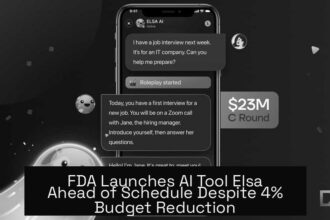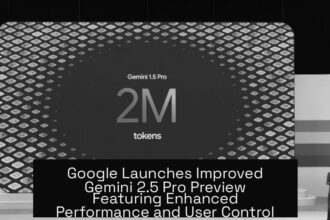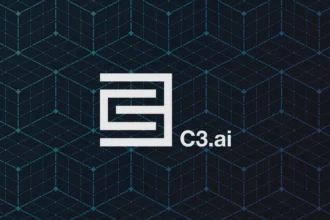Table of Contents
ToggleMeta’s Goal to Fully Automate Ad Creation Using AI
Meta aims to fully automate ad creation with artificial intelligence (AI) to enhance efficiency and targeting precision in digital advertising. This initiative targets streamlining the entire process of ad generation, from design to delivery, minimizing manual input while maximizing return on investment.
Understanding Meta’s AI-Driven Advertising Approach
Meta leverages AI to create personalized ads that adapt to user behavior and preferences. The system analyzes data points such as demographics, interests, and interaction patterns to craft optimized ads.
Automation involves generating ad copy, images, and targeting strategies automatically, reducing the necessity for extensive human oversight.
Benefits of Full AI Automation in Ad Creation
- Speed: AI rapidly develops multiple ad variants for testing.
- Personalization: Tailors ads dynamically to suit individual user profiles.
- Cost Efficiency: Cuts down on creative and management costs through automation.
- Performance Optimization: Continuously improves ad delivery based on real-time data analysis.
Challenges Meta Faces with AI-Based Ad Automation
Despite promising gains, automating ad creation raises concerns about creative quality and brand safety. Ensuring ads remain aligned with brand values and comply with policies is critical.
Furthermore, transparent communication about AI’s role in content creation remains necessary to maintain user trust and adhere to regulations.
Implications for Advertisers and Consumers
Advertisers may benefit from reduced workload and enhanced targeting precision, giving more opportunity to focus on strategy over manual tasks.
Consumers could see more relevant and engaging ads, though privacy considerations must be respected during data usage.
Looking Ahead
Meta continues to refine AI capabilities to improve automation accuracy and creative flexibility. Future developments may include deeper integration of natural language processing and visual AI technologies enhancing ad relevance and appeal.
Key Takeaways
- Meta plans to fully automate ad creation using AI to optimize digital advertising.
- Automation boosts speed, personalization, cost efficiency, and performance.
- Challenges include maintaining brand safety and creative quality.
- Advertisers gain efficiency; users receive more tailored ads subject to privacy considerations.
- Ongoing advancements aim to enhance AI’s creative and analytic functions in ads.
Exclusive: Meta Aims to Fully Automate Ad Creation Using AI
Meta is on a mission to revolutionize digital advertising by fully automating ad creation through AI. This move signals a significant shift in how businesses and marketers craft and deploy online ads. Imagine an ad campaign that practically builds itself, tailoring every nuance to your audience with little to no manual input.
If that sounds like something out of a sci-fi novel, it’s actually happening right now. Meta, the parent company of Facebook and Instagram, is making bold strides toward using artificial intelligence to streamline the ad creation process. Let’s unpack what that means and why it could matter to you.
The Big Picture: What Does Automation Mean for Ads?
Full automation of ad creation means taking away the usual headaches—creating visuals, writing headlines, selecting target audiences—and handing those tasks over to AI algorithms. Instead of spending hours tweaking ad copy or photos, advertisers can rely on AI to handle it all, delivering optimized ads that perform well across multiple platforms.
This automation taps into massive amounts of data to develop ads customized for specific users. By analyzing engagement trends, preferences, and behaviors, AI can predict what will catch a potential customer’s eye. It’s like having a digital creative team that works 24/7 without coffee breaks.
How Does Meta’s AI Automation Work?
While Meta hasn’t released exhaustive technical documentation on their new system, industry trends allow us to piece together how this innovation operates:
- Content Generation: AI tools can create multiple ad variations, from text to images, adapting messaging instantly depending on audience feedback.
- Dynamic Targeting: AI continuously learns which user segments respond best to certain ads, optimizing delivery in real-time.
- Budget Allocation: The automation decides where to allocate marketing spend across various formats and platforms for maximum ROI.
In essence, this technology moves beyond merely suggesting ad components—it builds complete campaigns autonomously. This is a major leap from the current systems where AI assists human creators.
Why Is Meta Betting So Big on AI-Powered Ads?
Meta competes in an ultra-crowded ad marketplace. Businesses want ads that not only look good but also connect deeply with potential customers. Manual creation can’t always deliver this precision, especially at the scale Meta’s platforms operate.
Automation makes ad creation faster and scalable while reducing costs. Marketers benefit by focusing more on strategic decisions rather than getting bogged down in the details. Plus, small businesses with limited budgets stand to gain, as AI-generated ads remove the need for professional designers or copywriters.
Example: From Manual to Automated Success
Picture a small online retailer aiming to launch a Christmas campaign. Traditionally, they’d spend days creating images, writing copies, and testing. With Meta’s AI, the campaign could generate dozens of ad versions instantly, test what works best, and adjust in real-time—all without manual tweaks.
This process ensures the retailer’s ads are tailored perfectly to each potential customer’s taste. As a result, more clicks happen, and sales rise, all while saving precious time and money.
The Potential Benefits and Proof of Concept
Meta is no stranger to AI advancements. Their existing AI-driven ad recommendations during campaign setup already boost engagement. Moving to full automation leverages that success to a more comprehensive degree.
Advertisers can expect:
- Improved ad performance via machine-learned personalization
- Reduced time investment in ad creation
- Higher return on marketing budgets
The proof lies in experimental usage by select advertisers, who report better click-through rates and conversion numbers thanks to the automated system’s nuances of appeal.
What Could Go Wrong? A Word of Caution
Automation sounds brilliant but isn’t without challenges. AI might generate ads lacking unique brand voice or nuance. It may misinterpret cultural contexts or generate repeated, bland content. Human oversight remains critical.
Meta seems aware of this, emphasizing that the technology aims to assist—not replace—creative teams. The best results come when AI handles routine tasks, freeing creatives to innovate at a higher level.
Looking Ahead: What This Means for Marketers and Consumers
For marketers, embracing Meta’s AI automation is about adapting and leveraging cutting-edge tools to stay competitive. It could democratize ad creation, allowing even small players to run sophisticated campaigns effortlessly.
Consumers may see ads that feel more relevant and less intrusive because AI algorithms better understand preferences and moods. But the ethical use of data remains central—ads must respect privacy while delivering value.
Meta’s ambition to fully automate ads using AI is a fascinating glimpse into the future of digital marketing. Whether you’re a business owner or a curious consumer, this evolution promises more personalized experiences and efficiency gains—without sacrificing creativity.
So, Are You Ready to Let AI Run Your Next Ad Campaign?
It’s tempting to wonder if the robots will take over all creative jobs. The truth is, AI offers powerful tools but still needs human imagination to add soul and flair. Meta’s automated ad creation is a partnership of man and machine, not a replacement.
Whether you jump on this train early or watch from the sidelines, one thing is clear: AI-driven ad automation is reshaping the marketing landscape. It’s time to get familiar with what AI can do for your campaigns and prepare for a smarter advertising future.
What is Meta’s goal with AI in ad creation?
Meta aims to fully automate the ad creation process using artificial intelligence. This means reducing the need for manual input to design and optimize ads.
How will AI improve Meta’s ad system?
AI can quickly generate ad content based on data patterns, potentially improving targeting and effectiveness without constant human oversight.
Will businesses lose control over their ads due to automation?
Businesses may have less hands-on control, but they would likely influence key settings while AI manages the creative process and optimization.
Does full automation mean Meta will create ads without user input?
Full automation suggests minimal input, but initial goals and preferences from users will still guide the AI’s ad creation tasks.
How might this automation affect ad costs on Meta platforms?
Automated ad creation could lower costs by improving efficiency and targeting, but precise financial impacts depend on implementation.





